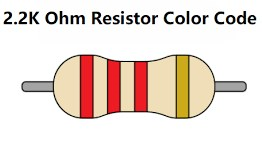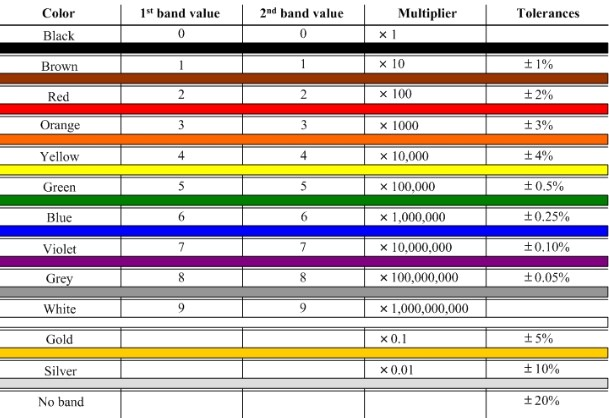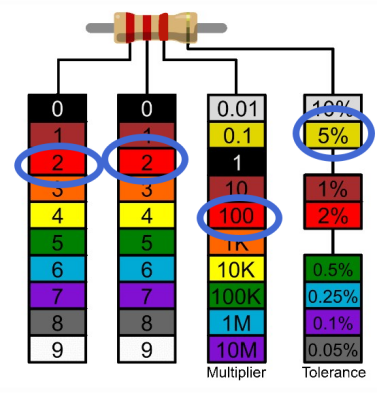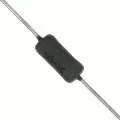OUTLINE:
How to Read 2.2 Kilo Ohm Resistor Color Code
 202
202Unraveling the mysteries of electronic components often begins with understanding their fundamental aspects. Among these components, resistors play a crucial role, and the 2.2 Kilo Ohm resistor is no exception.
In this exploration, we will uncover the significance of resistor color codes, demystify the specifics of the 2.2 Kilo Ohm variant, and provide a comprehensive guide titled "Everything You Should Know About 2.2 Kilo Ohm Resistor Color Code."
What Is A 2.2 Kilo Ohm Resistor Color Code
Here comes the answer:
The color code for a 2.2 Kilo Ohm resistor involves four color bands that are used to denote its resistance value.
The first and second bands represent the significant digits of the resistance value, with each color corresponding to a specific number. The third band indicates the multiplier by which the significant digits are multiplied to obtain the final resistance value in ohms.
For a 2.2 Kilo Ohm resistor, the color code typically involves two significant digits followed by a multiplier of 1,000 (kilo). The fourth band represents the tolerance of the resistor, indicating the permissible deviation from the specified resistance value.
To accurately interpret the color code, one must refer to a standard resistor color code chart, which assigns specific colors to numerical values and multipliers.
Understanding the 2.2 Kilo Ohm resistor color code is essential for identifying and using these resistors effectively in electronic circuits.

How To Read A 2.2 Kilo Ohm Resistor Color Code for 4-band resistor
To read the color code of a 2.2 Kilo Ohm resistor with a 4-band configuration, you can follow these points according to the common chart:
- Identify the First Band (1st Digit)
The first band represents the first significant digit of the resistance value. Match the color of this band to a corresponding number on a resistor color code chart. Note down this digit.
- Identify the Second Band (2nd Digit)
The second band denotes the second significant digit of the resistance value. Match its color to the appropriate number on the color code chart and record this digit.
- Identify the Third Band (Multiplier)
The color of the third band indicates the multiplier by which the two significant digits are multiplied to obtain the final resistance value.
Common multipliers include 10, 100, 1,000 (kilo), etc. Find the corresponding multiplier on the color code chart.
- Combine Digits and Apply Multiplier
Take the first and second digits obtained from the first two bands and combine them. Then, multiply this two-digit number by the multiplier indicated by the color of the third band. This gives you the resistance value in ohms.
- Identify the Fourth Band (Tolerance)
The color of the fourth band represents the tolerance of the resistor, indicating the permissible deviation from the specified resistance value.
Refer to the color code chart to determine the tolerance percentage associated with the color.

How Does the 2.2 Kilo Ohm Resistor Color Code Work
For a 2.2 kilo ohm resistor, the color code would typically consist of four bands: three for the resistance value and one for the tolerance.
Here's how the 2.2 Kilo Ohm Resistor color code works:
- First Band (1st Digit): The first color is red. That tells you the first digit of the resistor value is 2. So, we start with a 2.
- Second Band (2nd Digit): If the second color is also red, the second digit is also 2. Now we have 22.
- Third Band (Multiplier): Look at the third color. If it's red again, it means you multiply the two digits (2 and 2) by 100. So, you get 220.
- Fourth Band (Tolerance): Check the last band. If it's gold, it means the actual value of the resistor could be 5% more or less than 220.

Putting it all together, a 2.2 kilo ohm resistor with the color code Red-Red-Red-Gold means its value is approximately 220 kilo ohms, and it might be a bit higher or lower by 5%. So, the final value could range from 209 to 231 kilo ohms.
What Are the Advantages of 2.2 Kilo Ohm Resistor Color Code
The use of color codes on resistors, including the 2.2 kilohm resistor, offers several advantages:
- Quick Identification: The color code provides a quick and visual way to identify the resistance value of a resistor without the need for measurement tools.
- Space Efficiency: Color bands take up less space on a small resistor compared to printed numerical values. This is particularly crucial in electronic circuits where components need to be compact.
- Readability: Color codes are easily readable, even in low-light conditions or situations where detailed text may be hard to discern.
- Standardization: The color code system is standardized globally, making it consistent and recognizable across different manufacturers and regions.
- Reduced Errors: Since color codes are standardized, there's less chance of misinterpretation or confusion compared to reading numerical values. This reduces the risk of errors in circuit assembly.
- Cost-Effective: Implementing color codes is cost-effective in terms of manufacturing and labeling resistors, as it doesn't require additional printing or labeling processes.
- Suitable for Color-Blind Individuals: Color codes are designed to be distinguishable by individuals with color vision deficiencies. Different combinations of colors cater to different digits and values, making it accessible to a broader audience.
- Tolerance Indication: The color code also includes a band indicating the tolerance of the resistor, providing information about the allowable range of deviation from the specified resistance value.
Final Verdict
Understanding the color code of a 2.2 kilo-ohm resistor is essential for quickly determining its resistance value and tolerance.
The color bands provide a visual code for the first and second digits, multiplier for kilo-ohms, and tolerance level.
By decoding these bands, electronics enthusiasts and professionals alike can effortlessly identify and use 2.2 kilo-ohm resistors in various applications, ensuring accurate and reliable circuitry.
Mastering the resistor color code is a valuable skill for anyone working with electronic components.

Disclaimer: The views and opinions expressed by individual authors or forum participants on this website do not represent the views and opinions of Chipsmall, nor do they represent Chipsmall's official policy.

share this blog to:











